Germany has developed many different dog breeds. The Germans have technically bred over 50 unique breeds. While the German Shepherd is easily the most recognized of these breeds, many other common dog breeds may surprise you concerning their origins. Today, many German breeds are the most popular dogs around the world. Germany just seems to know something about creating great dogs.
While Germany has created dozens of dogs, 15 are particularly successful. Let’s have a quick look at them:

What a beautiful and wide variety of dogs! Read on for more information about these popular breeds.
1. Great Dane
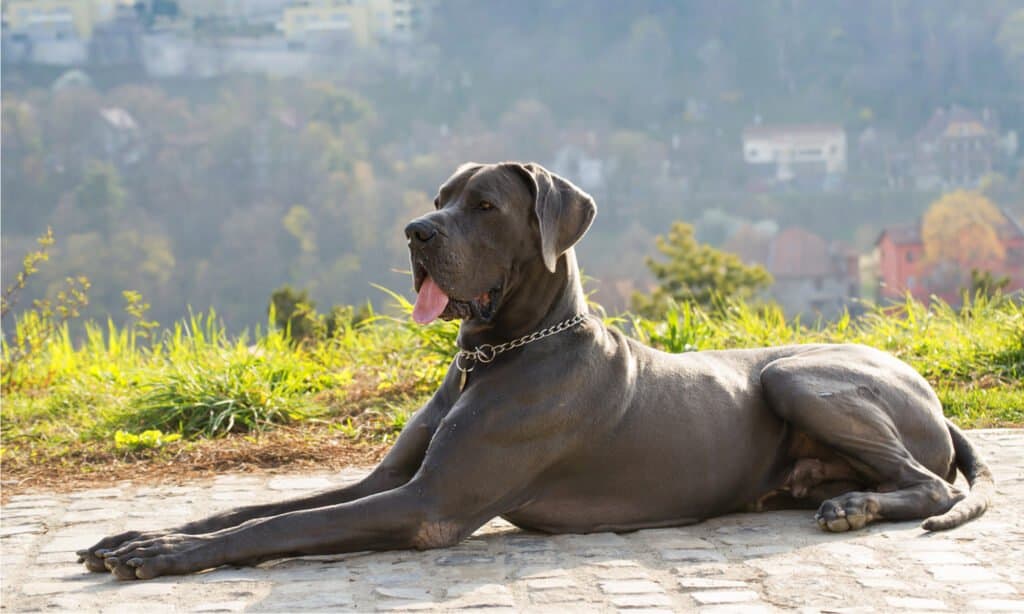
Great Danes are smart, affectionate, loyal pups that will be a great addition to your family!
©belu gheorghe/Shutterstock.com
Germany’s national dog is the Great Dane. Despite having “Dane” in its name, this breed is originally from Germany. The dog doesn’t have any connections to Denmark. However, a slightly confused biologist used the term in a book on dogs hundreds of years ago. The name stuck, and since then, everyone uses it (even the Germans).
The Germans originally bred this breed to take down wild boar, hence their colossal size. Boars today are pretty dangerous. However, they were even more challenging to handle hundreds of years ago. The Great Dane was developed to catch and hold the boar while the hunter struck the killing blow. To accomplish this, the Great Dane had to be large, agile, and tough.
The Great Dane of today is different from these older hunters, though. Breeders removed their aggression and hunting drive to make the dog more family-friendly. Great Danes stopped being kept as hunting dogs with the invention of guns when taking down large game became much easier.
Today, many describe this dog as a “gentle giant.” They’re great with families and highly affectionate. They tend to like cuddling, despite being so large. They’re pretty docile and don’t require much exercise. They’re moderately intelligent, allowing them to be trained with ease. Their devotion means they will also listen to commands in the real world.
2. German Shepherd
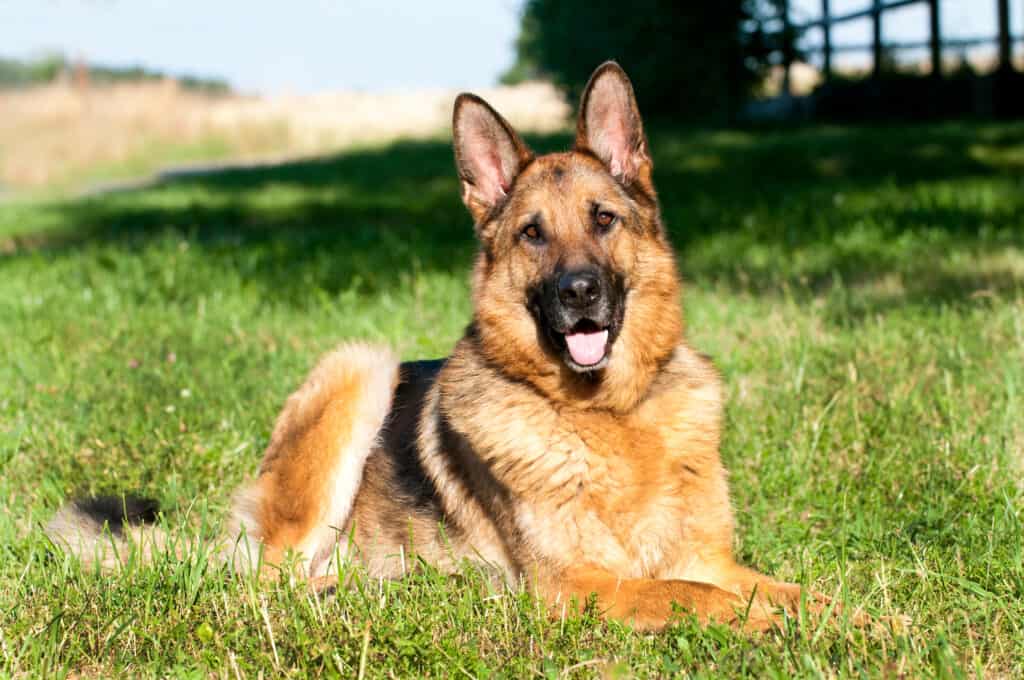
Everyone knows that
German Shepherds
come from Germany; it’s in their name. However, these dogs are often much different than the original German breed.
©Dora Zett/Shutterstock.com
Everyone knows that German Shepherds come from Germany; it’s in their name. However, these dogs are often much different than the original German breed.
Initially, the German Shepherd was developed almost purely for its guarding abilities. They were shepherd dogs that guarded sheep and other livestock against threats, including predators and thieves. However, as these dogs spread across the globe, this original purpose was largely lost.
For instance, in the United States, breeders tend to focus on the AKC standards for dog shows, which place physical appearance at the forefront. Sadly, this has led to a watering-down of the dogs’ trainability, temperament, and health. Many show-line German Shepherds today have severe back and hip issues due to the increasing spine angle.
Luckily, there are some breeders still producing dogs for working purposes. These dogs tend to be healthier and have a better temperament. Plus, they tend to look a bit different from show-line dogs, as well. These dogs are still the norm in Germany, and many police departments adopt these puppies specifically.
Because of the differences between these two lines, where you adopt your German Shepherd matters.
No matter where you get your German Shepherd from, these dogs require lots of exercise, socialization, and training. They aren’t suitable for every family due to their intense guarding instincts.
3. Affenpinscher
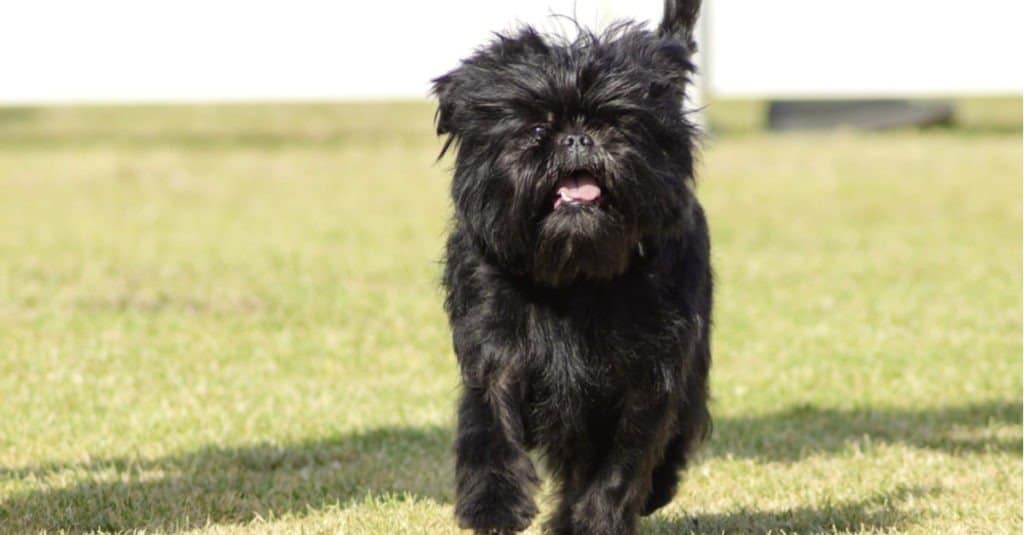
Affenpinscher’s are friendly dogs, but they can be yappy!
©f8grapher/Shutterstock.com
Despite their dainty, unique appearance, the Affenpinscher isn’t a toy dog. Instead, Germans bred this dog breed as a ratter. The Affenpinscher would be kept in kitchens, factories, farms, and similar places to prevent rat infestations. Therefore, this dog is considered a terrier.
That said, people began keeping the Affenpinscher as a company animal early on. Their small size and affectionate personality make them easy to fall in love with.
However, you still shouldn’t mistake them for toy dogs. Instead, this breed has a lot of endurance and extremely high prey drive. They tend to bite and chase just about anything, so they aren’t great options in homes with small pets.
4. Poodle
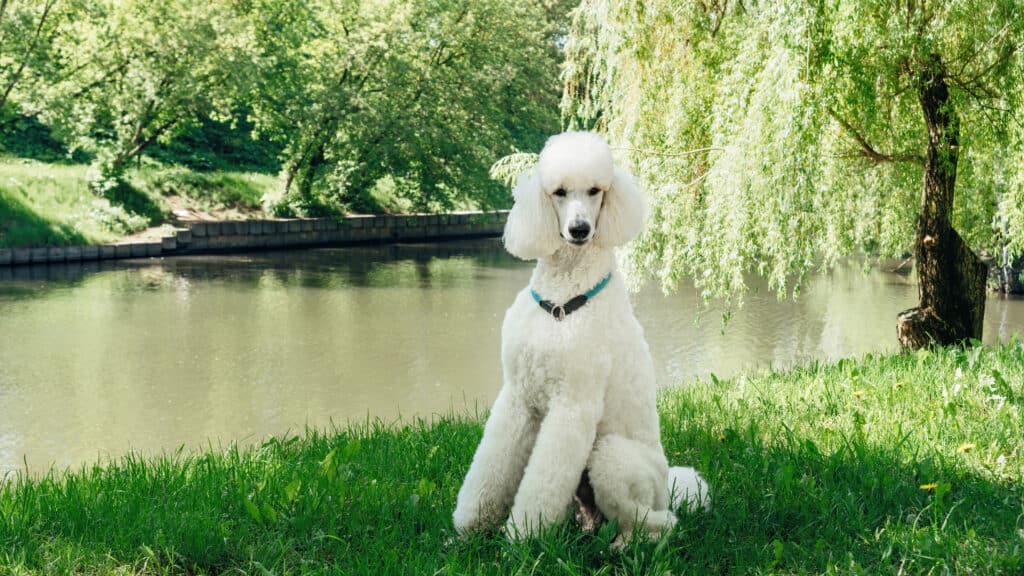
Poodles started in Germany, where they were bred as retrieving dogs.
©nieriss/Shutterstock.com
The Poodle remains one of the most popular dogs around the world. However, they started in Germany, where they were bred as retrieving dogs. Their curly coat helps protect them from the elements, and even the “Poodle cut” has a traditional purpose – it helped free up the joints while keeping the dog as warm as possible.
Today, the breed is primarily kept as a companion animal. They aren’t for everyone, though. They are extremely active, requiring hours of exercise a day. Their high intelligence also makes them bored quickly, so plenty of mental stimulation is required. Throw grooming on top of all that, and you end up with a very high-maintenance dog.
Often, they are considered a hypoallergenic breed. However, studies have found that this isn’t true. Most dogs described as “hypoallergenic” produce more dander and allergy symptoms than other breeds. Those with dog allergies are allergic to a dog’s skin, saliva, and urine – not their hair.
5. Doberman Pinscher
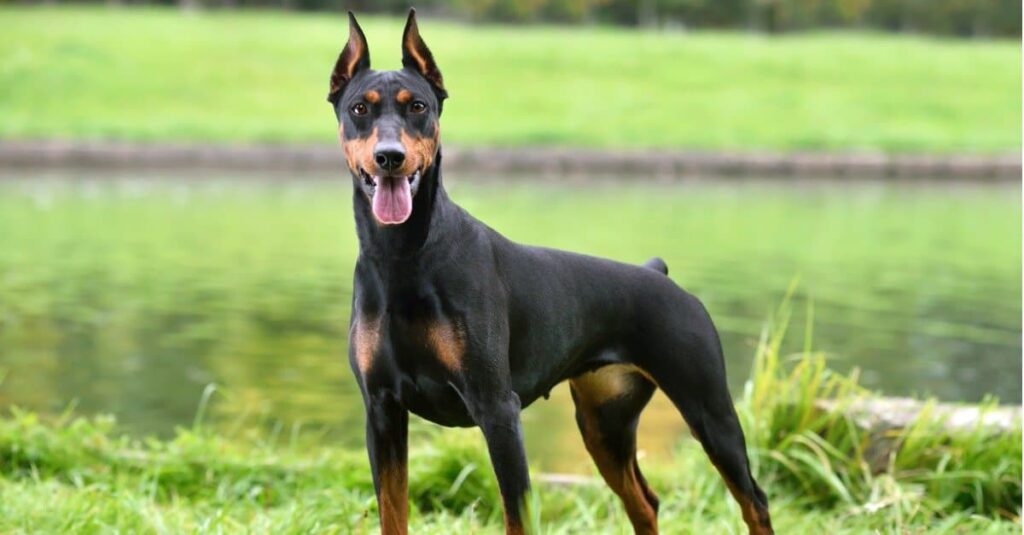
Dobermans were first bred by a tax collector.
©eAlisa/Shutterstock.com
Louis Doberman was a tax collector in 1890. As you can imagine, his job was hazardous at the time. Not only was he commonly threatened by thieves, but people just don’t like tax collectors all that much. To protect himself, Louis created a dog to guard him on his rounds. Luckily, he had access to a local dog pound, where he could mix different dogs. Eventually, this led to the Doberman Pinscher.
Louis was very successful, as many still consider the Doberman the best guard dog around. These canines are intelligent, assertive, and obedient (as well as a little scary). However, due to their history, they are often mischaracterized as violent or dangerous.
However, temperament tests show that the dog isn’t particularly violent or prone to biting. Still, the Doberman requires a lot of training and socialization, as they tend to distrust strangers. Socialization helps them understand that not everything is a threat. Luckily, thanks to their trainability, this task isn’t too hard.
6. Pomeranian

Germany developed this breed solely for companionship.
©Eva Sustar/Shutterstock.com
The Pomeranian may not seem as fierce as other German breeds – and for a good reason. Germany developed this breed solely for companionship. Therefore, these dogs are very people-oriented and charming. They tend to be a bit hyperactive. However, they are so small that it isn’t hard to meet their exercise needs.
These dogs have strong hunting instincts despite being companion animals. Therefore, they tend to chase just about everything.
While these dogs absolutely love all people, their neediness can lead to separation anxiety. Pomeranians also aren’t very trainable, either, as they have lower intelligence.
7. Rottweiler

Rottweilers
are often considered aggressive and dangerous. However, temperament tests
show
that they aren’t particularly aggressive.
©iStock.com/Meagan Jenkins
Rottweilers are often considered aggressive and dangerous. However, temperament tests show that they aren’t particularly aggressive. They rank similarly to Saint Bernard.
With that said, Germans bred this breed for guarding purposes. They originally guarded farmers, shepherds, and merchants. Many believe that they first guarded butchers, as meat was a very expensive commodity hundreds of years ago.
These dogs likely descended from the Ancient Roman and Ancient Greek Molossus, a war dog. Therefore, they are very bulky and sturdy. While they aren’t particularly tall, they have a lot of muscle.
Today, Rottweilers are still used for guarding purposes, but many families also keep them as companion animals. They require a lot of exercise and socialization, as they are naturally aloof towards strangers. An unsocialized Rottweiler can be hard to handle, so be sure you can handle this time commitment.
8. Boxer

Boxers are known as the “Peter Pan” of dog breeds.
©iStock.com/AprilCarlsonPhotography
In many countries, Boxers enjoy a lot of popularity. They have extremely people-oriented, energetic, and smart. These dogs often act great around children, though their hyper behavior can cause some accidents. They’re very trainable, though that often doesn’t overcome their hyper nature.
Boxers can weigh up to 80 pounds. They have strong protective instincts, though they are mostly kept as hunting animals today. Some people do utilize them for guarding purposes, especially because they are so good with families.
In some cases, Boxers can be unhealthy. For the most part, it depends on the breeder you go through. While choosing a quality breeder is always important, it’s especially vital for Boxers. Paying a little extra can help ensure you have a healthy puppy.
9. Dachshunds
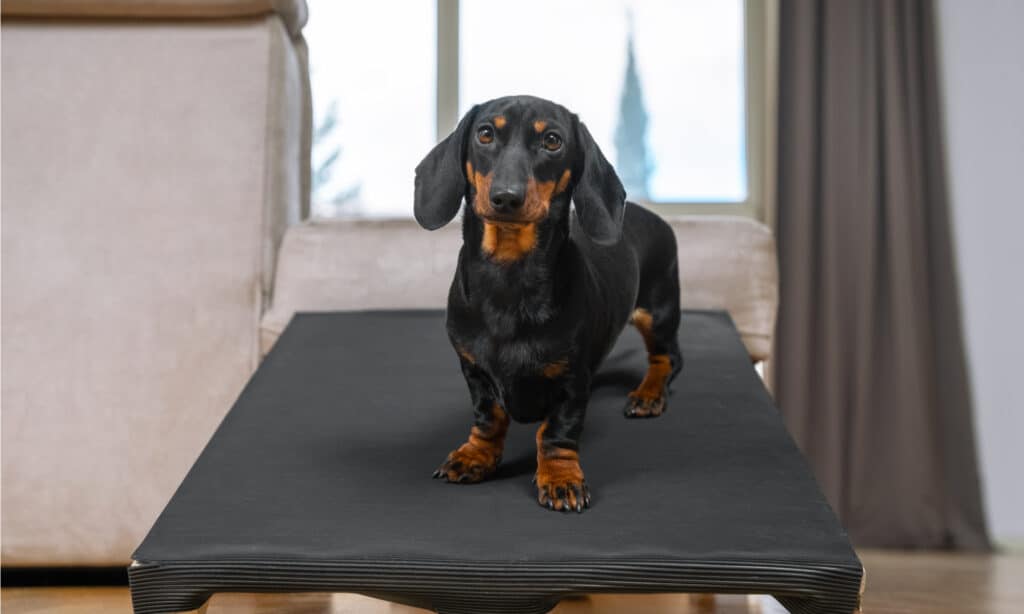
Dachshunds
are pretty popular dogs. While they are extremely small, people originally kept them as hunting dogs.
©Masarik/Shutterstock.com
Dachshunds are pretty popular dogs. While they are extremely small, people originally kept them as hunting dogs. They flushed badgers and similar animals out of burrows – sometimes even fighting them on the way out. They’re very feisty and have tons of personality.
Today, not many people use them for hunting. However, they remain pretty popular companion dogs in many countries. They retain a lot of their hunting characteristics, including their short legs.
While Dachshunds are independent, they are also loyal and affectionate. Despite being small, they require a lot of exercise as hunting dogs. They easily bore, so mental stimulation is needed, too. Many people absolutely love Dachshunds because of their interesting personalities. However, they are a bit more work than other breeds.
Dachshunds can live up to 16 years – one of the longest lifespans of any dog. However, there are several health issues to which they are prone.
10. German Shorthaired Pointer
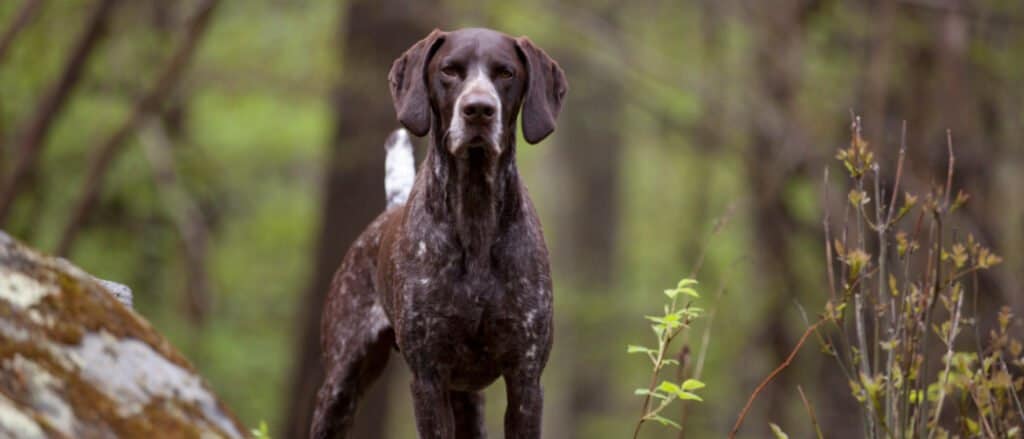
The
German Shorthaired Pointer
was primarily bred as a field dog. This canine could perform several hunting functions, though it was primarily known for pointing.
©iStock.com/BranstonandTwiglet
As their name suggests, the German Shorthaired Pointer was primarily bred as a field dog. This canine could perform several hunting functions, though it was primarily known for pointing.
The GSP is a serious hunting dog. They’re still utilized for hunting purposes, though some people also keep them as companion animals. They’re very sweet and affectionate, so they fit nicely in with many families. However, they require a lot of exercise and mental stimulation. It’s easy for them to become bored.
The German Shorthaired Pointer also isn’t particularly popular outside of Germany. Therefore, it can be very challenging to find one in a different country.
11. Leonberger
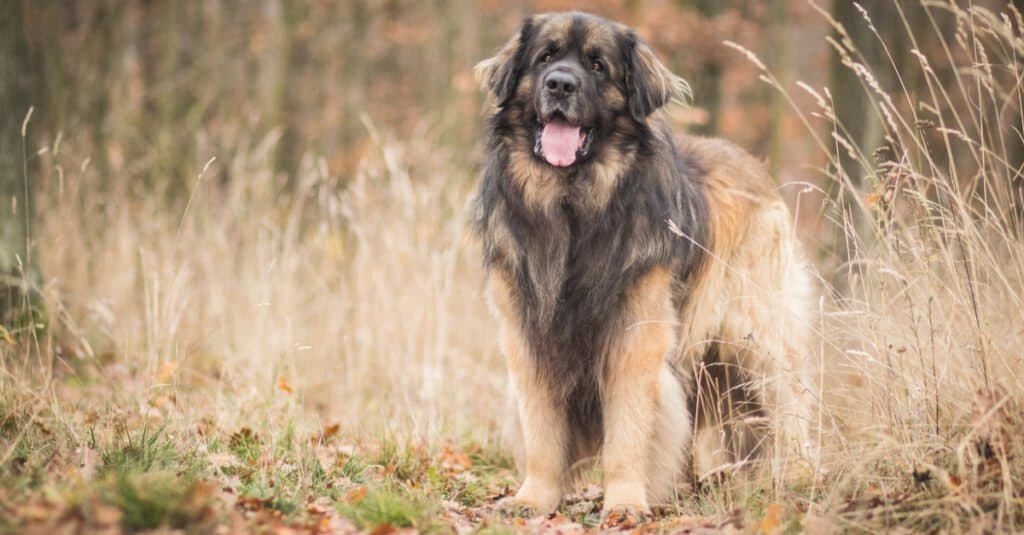
Leonbergers have a double coat of thick hair. Given its heavy shedding, grooming is important.
©AnetaZabranska/Shutterstock.com
The Leonberger proves to be one of the biggest breeds from Germany. They weigh up to 170 pounds, making them one of the largest breeds in the world. This canine was bred as a working dog, though their exact job differed widely. They pulled carts and were employed across many farms. If a large dog was needed, they performed the job.
However, this breed was also popular among German royalty. They have a gentle and affectionate personalities, making them a good choice for families. While they are working dogs, they don’t require tons of exercise. Their larger size makes them a bit lazier than other canines out there.
Of course, because they are so large, they take up a lot of room and generally cost more money to upkeep. Therefore, be sure you have enough room in your home and budget before adopting one of these dogs.
12. Weimaraner
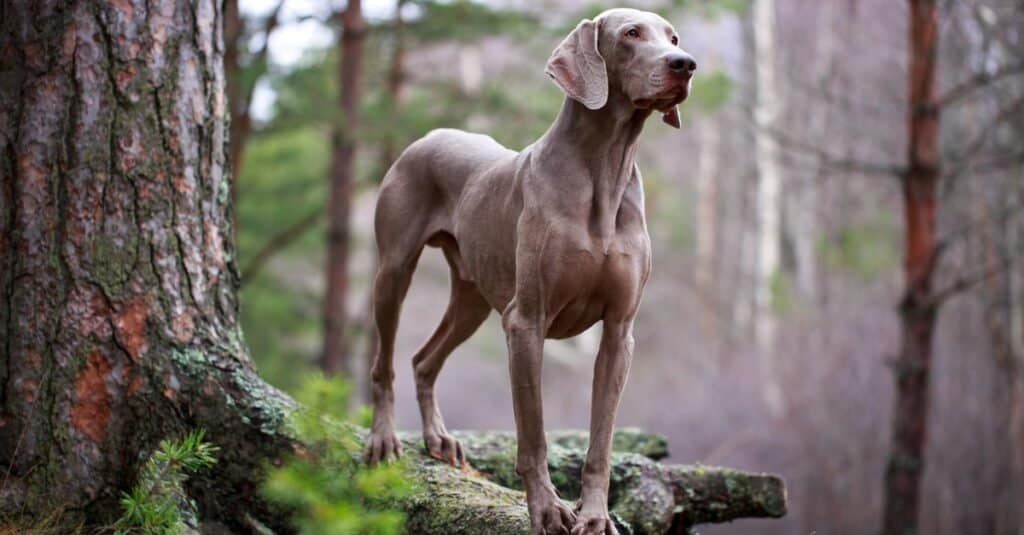
While the
Weimaraner
isn’t a super popular breed, it is one of the most recognizable.
©DragoNika/Shutterstock.com
While the Weimaraner isn’t a super popular breed, it is one of the most recognizable. This blue-gray dog was bred as a hunting companion, usually for mountain lions and bears. It didn’t appear until the 19th century, though it quickly gained a reputation as one of the best tracking dogs.
This breed even appeared in the White House, when U.S. President Eisenhower adopted one.
However, as hunting dogs, Weimaraners require a lot of exercise. They do best for active families that tend to have a lot of time on their hands. These dogs are quite intelligent. But, they are independent, as they were bred to track without the guidance of their master. Therefore, they don’t often respond to commands and aren’t necessarily as devoted as other dogs.
Furthermore, Weimaraners can be extremely expensive. Breeders outside of Germany may be challenging to find. Therefore, you may spend quite a bit of time waiting for a puppy.
13. American Eskimo

This dog was imported into America in the 19th century, likely by German immigrants.
©Bikenbark/Shutterstock.com
Despite its name, the American Eskimo dog isn’t American. Instead, this dog was imported into America in the 19th century, likely by German immigrants. Breeders originally kept these dogs to work on farms and in traveling circuses. It’s this latter job that may them particularly famous. Today, this breed enjoys minimal popularity, and it can be challenging to find breeders in most countries.
The American Eskimo has high intelligence. They’re fairly easy to train for this reason. However, their hyper nature can make them less well-behaved than other dogs. Still, their smaller size makes them a popular choice for dog owners that love the fluffy, exotic nature of spitz dogs but don’t have the room for a larger canine.
14. Giant Schnauzer

The origin of the giant schnauzer can be traced back to 15th-century Germany.
©iStock.com/Nemyrivskyi Viacheslav
The Giant Schnauzer remains one of the most beloved dogs in Germany. They have a strong work ethic and decent intelligence level, which they originally used to herd and guard sheep. However, today, police and military are more likely to use them than farmers. Many families also keep them as companion animals.
These canines can be easily trained. However, they don’t do best in families with other pets. Often, they aren’t comfortable around other dogs. Luckily, they don’t have strong prey drives. Therefore, they may do fine in homes with cats.
15. Miniature Pinscher
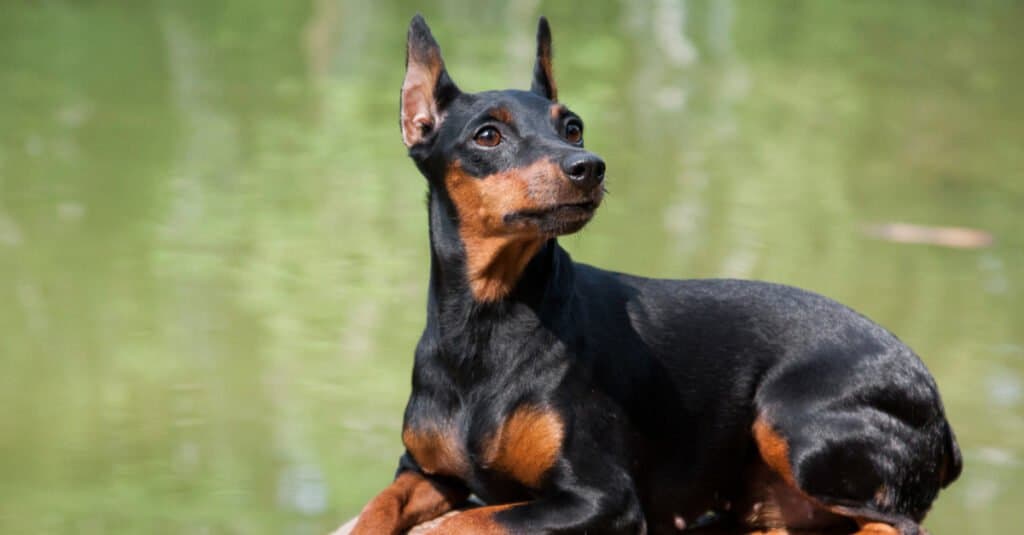
Miniature pinschers were bred as ratters in Germany, where they were often kept in barnyards.
©katamount/Shutterstock.com
While the Miniature Pinscher looks like a Doberman, it acts quite differently. They were bred as ratters in Germany, where they were often kept in barnyards. However, their smaller size also makes them a more popular companion animal, especially for apartments and small spaces.
Miniature Pinschers are very fearless. They usually have an affectionate disposition. However, they’re very energetic and often do best in active families. Furthermore, they can also be quite noisy.
Summary of the 15 Best German Dog Breeds
Germany has gifted the world with over 50 dog breeds – here is a list of the best:
| German Dog Breed | Original Task |
|---|---|
| Great Dane | Taking down wild boars |
| German Shepherd | Guarding livestock |
| Affenpinscher | Ratting |
| Poodle | Retrieving |
| Doberman Pinscher | Guarding people and property |
| Pomeranian | Companionship |
| Rottweilers | Guarding people and sheep |
| Boxer | Bull-baiting; controlling cattle at the slaughterhouse |
| Dachshunds | Flushing animals out of burrows |
| German Shorthaired Pointer | Hunting and pointing |
| Leonberger | Working on farms, pulling carts, etc. |
| Weimaraner | Hunting and tracking mountain lions and bears |
| American Eskimo | Farm and circus work |
| Giant Schnauzer | Herding and guarding sheep |
| Miniature Pinscher | Ratting |
The photo featured at the top of this post is © iStock.com/maksicfoto
Ready to discover the top 10 cutest dog breeds in the entire world?
How about the fastest dogs, the largest dogs and those that are -- quite frankly -- just the kindest dogs on the planet? Each day, AZ Animals sends out lists just like this to our thousands of email subscribers. And the best part? It's FREE. Join today by entering your email below.
FAQs (Frequently Asked Questions)
What is Germany's national dog?
Germany’s national dog is the Great Dane. Despite having “Dane” in its name, this breed is originally from Germany. The dog doesn’t have any connections to Denmark. However, a slightly confused biologist used the term in a book on dogs hundreds of years ago. The name stuck, and since then, everyone uses it (even the Germans).
What was the affenpinscher bred for?
Despite their dainty, unique appearance, the Affenpinscher isn’t a toy dog. Instead, Germans bred this dog breed as a ratter. The Affenpinscher would be kept in kitchens, factories, farms, and similar places to prevent rat infestations. Therefore, this dog is considered a terrier.
Thank you for reading! Have some feedback for us? Contact the AZ Animals editorial team.







